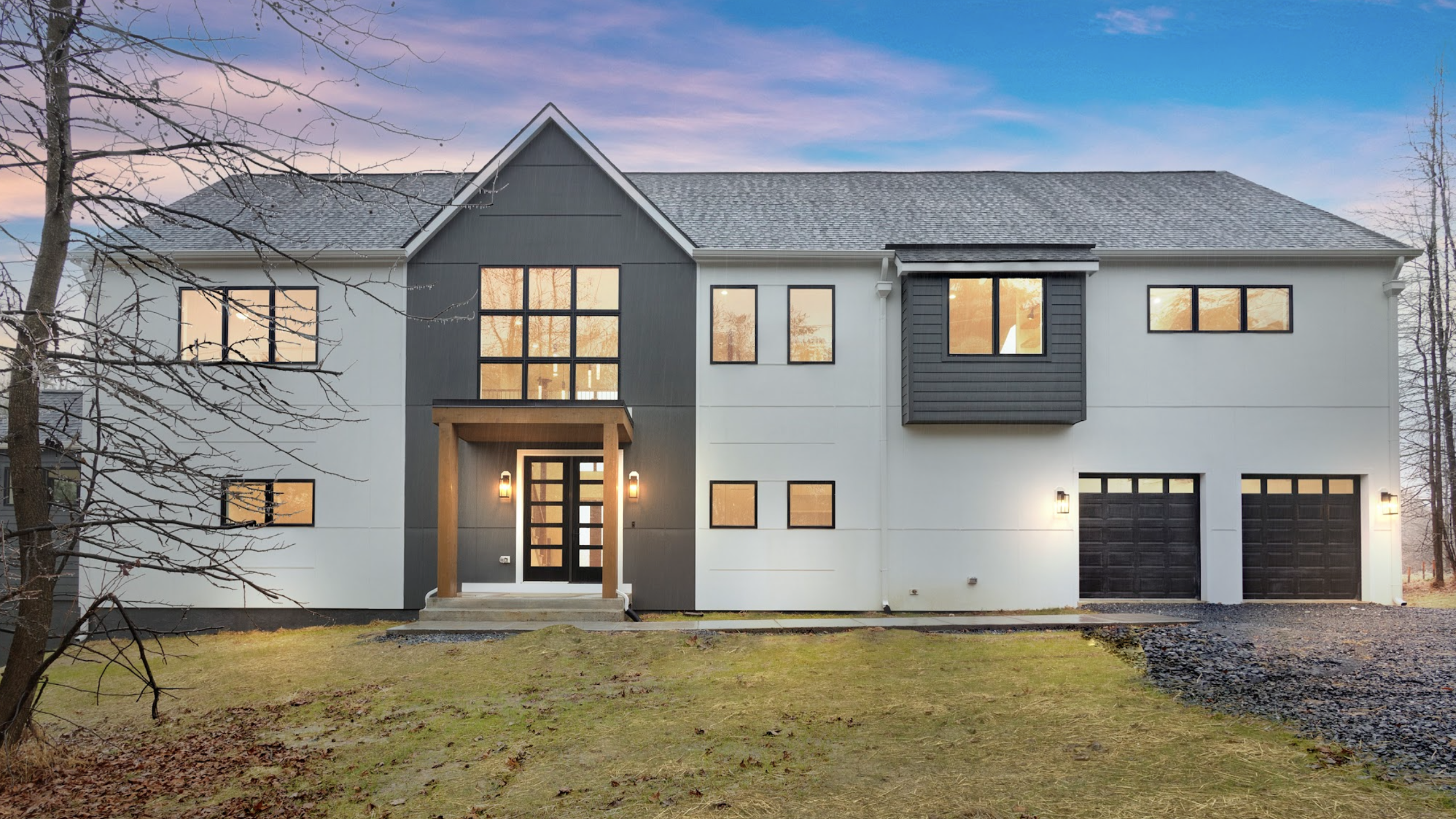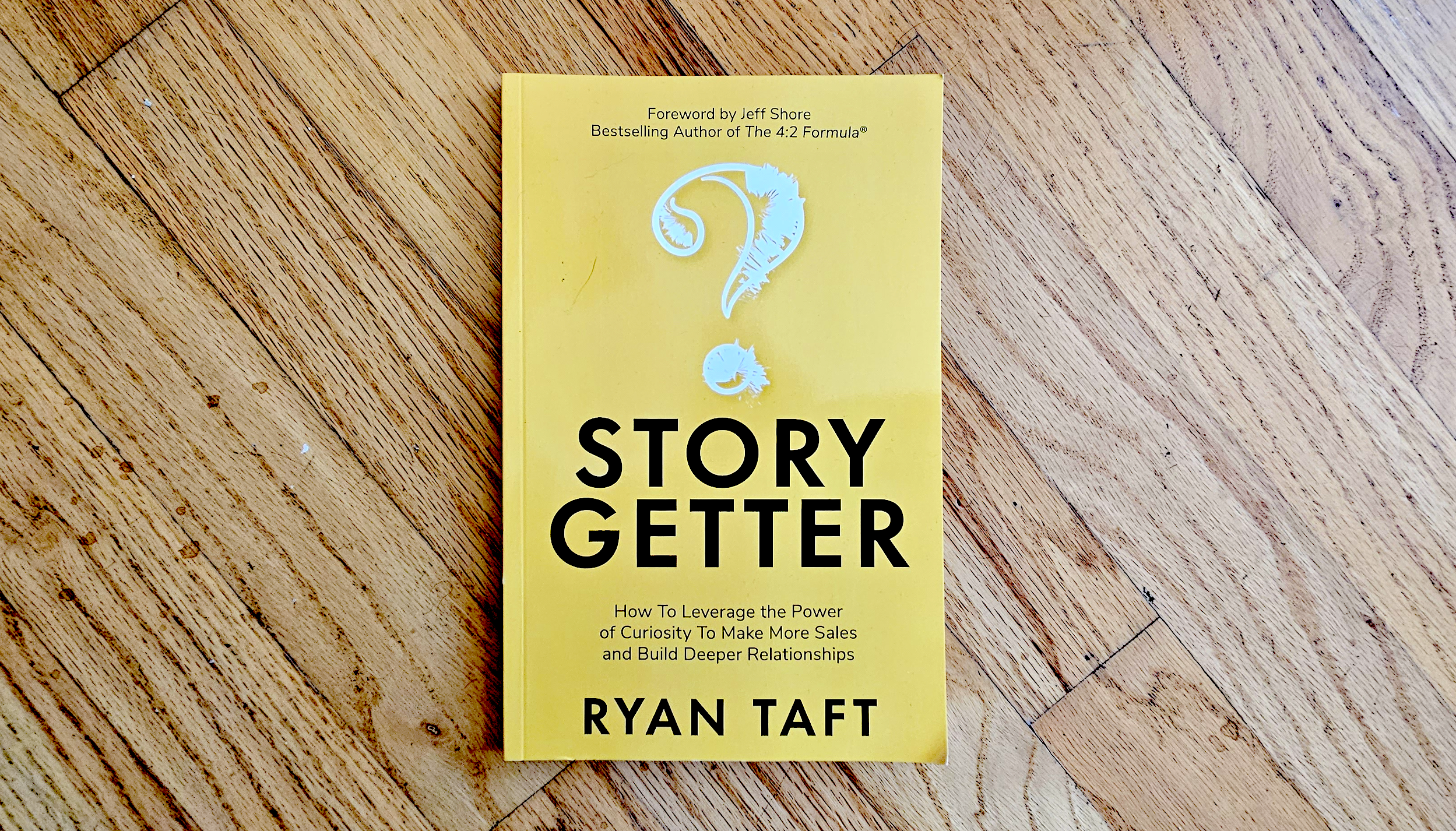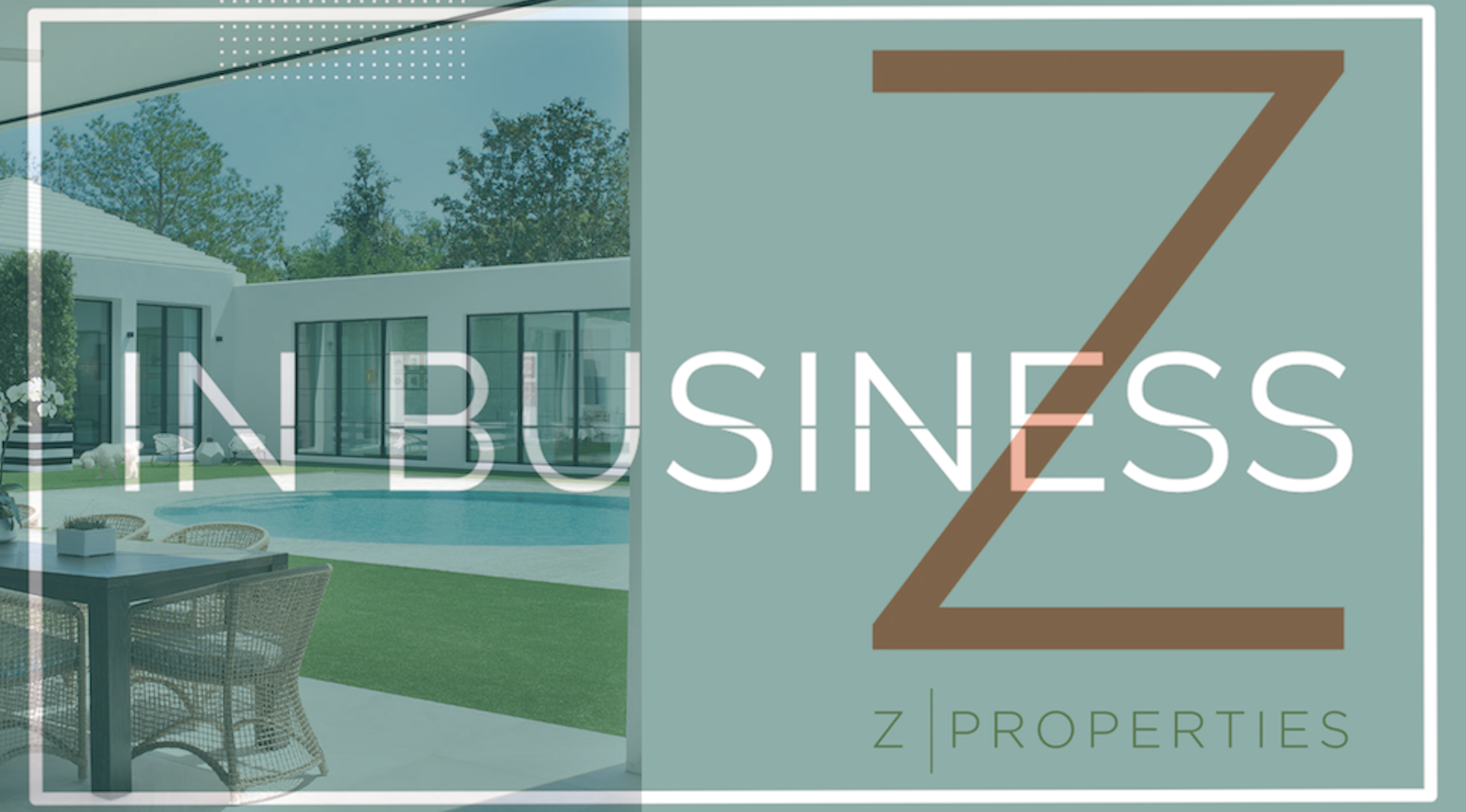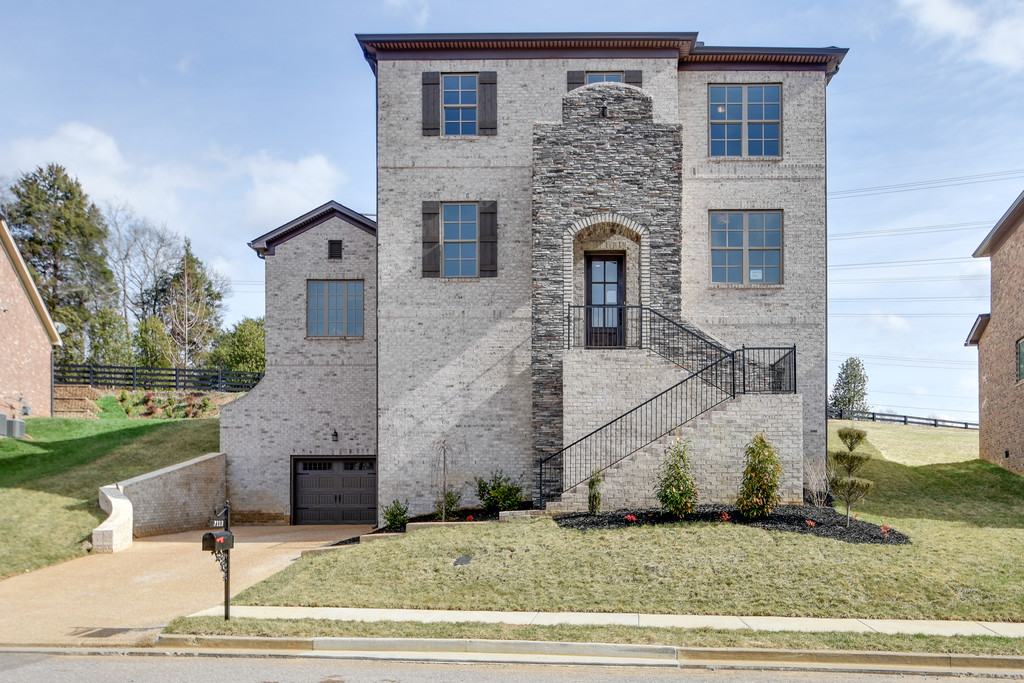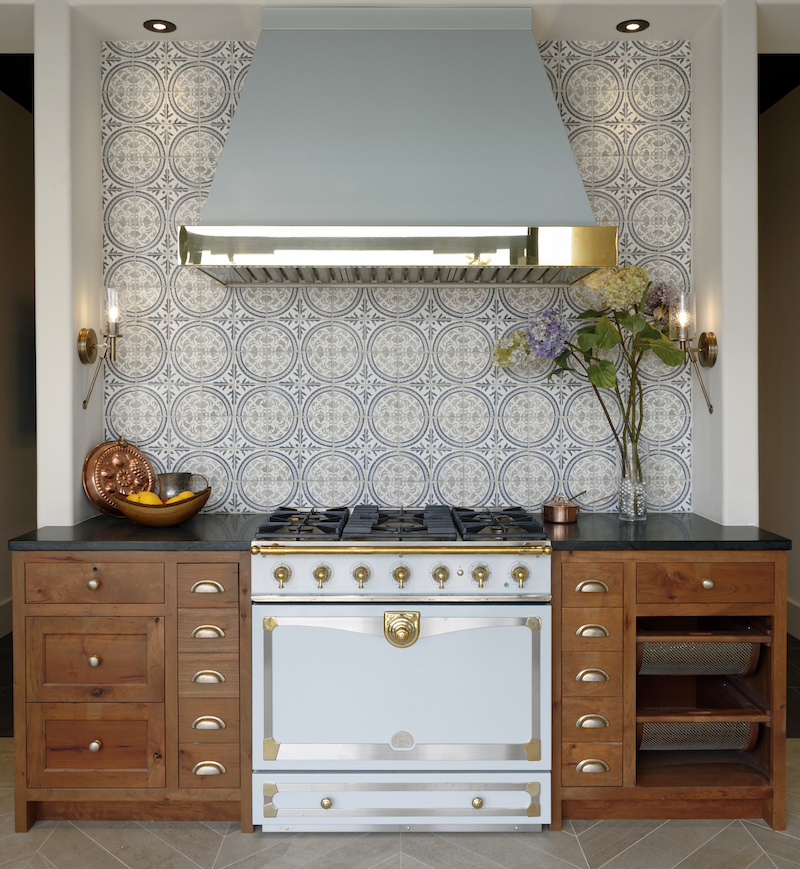August Homes, based in Tysons, Va., designs and builds custom homes in Washington, D.C., Northern Virginia, and Maryland for “families and the future.” The motto, according to the company’s president, Vicrum Puri, refers to an embrace of modern technology such as home automation via sensors and smartphones and energy-producing and -saving systems, alongside low-tech solutions. The aim is to give clients a home that fits their needs while costing less to operate by incorporating various levels of technology that provide homeowners with a comfortable haven they can enjoy well into the future even as the technology and the climate change.
The level of smart home automation in each home depends on client needs, but most homeowners seek out August Homes specifically for the builder's approach to integrating technology and its high-performance building philosophy. Some of the high-tech features August offers include smart home automation systems, solar power arrays, troubleshooting sensors, EV charging stations—for owners and guests—as well as energy-efficient HVAC, fresh air exchange, and water reclamation.
“Our focus is to pay as much attention to what’s behind the walls,” Puri says, “as to what our clients see and touch.”
Matching Tech Levels to Client Needs
In the case of this custom home sitting on a 10-acre parcel in Loudoun County, Va.—about 45 minutes northwest of D.C.—the clients are a retired couple with adult children, whose design goals involve energy independence, easy maintenance, and maximizing indoor/outdoor living. The program revolves around main-floor living for the owners with views and public spaces arranged along the rear of the house looking out over the vast acreage. Utilitarian spaces are located at the front of the home, with additional bedrooms upstairs for guests.
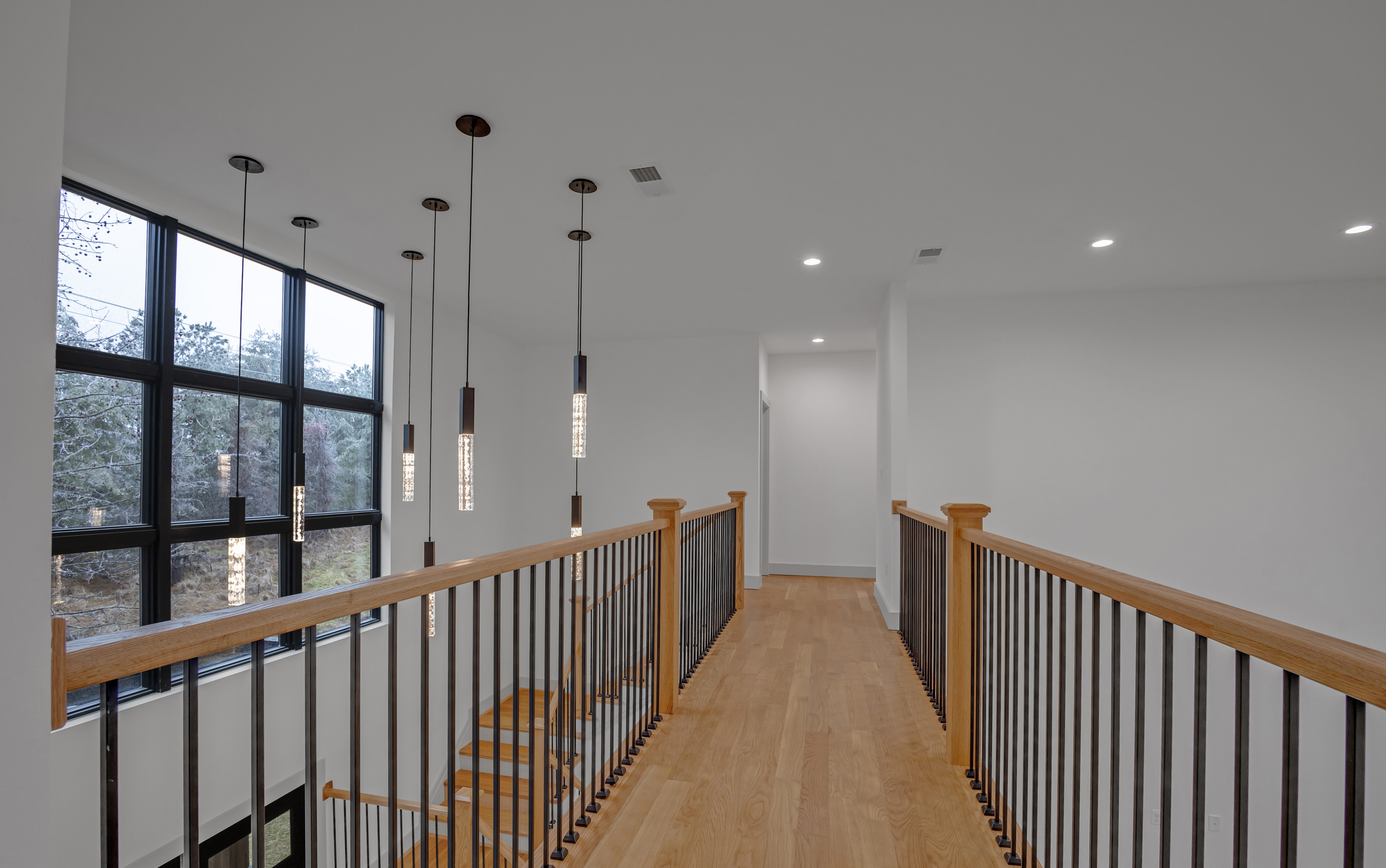
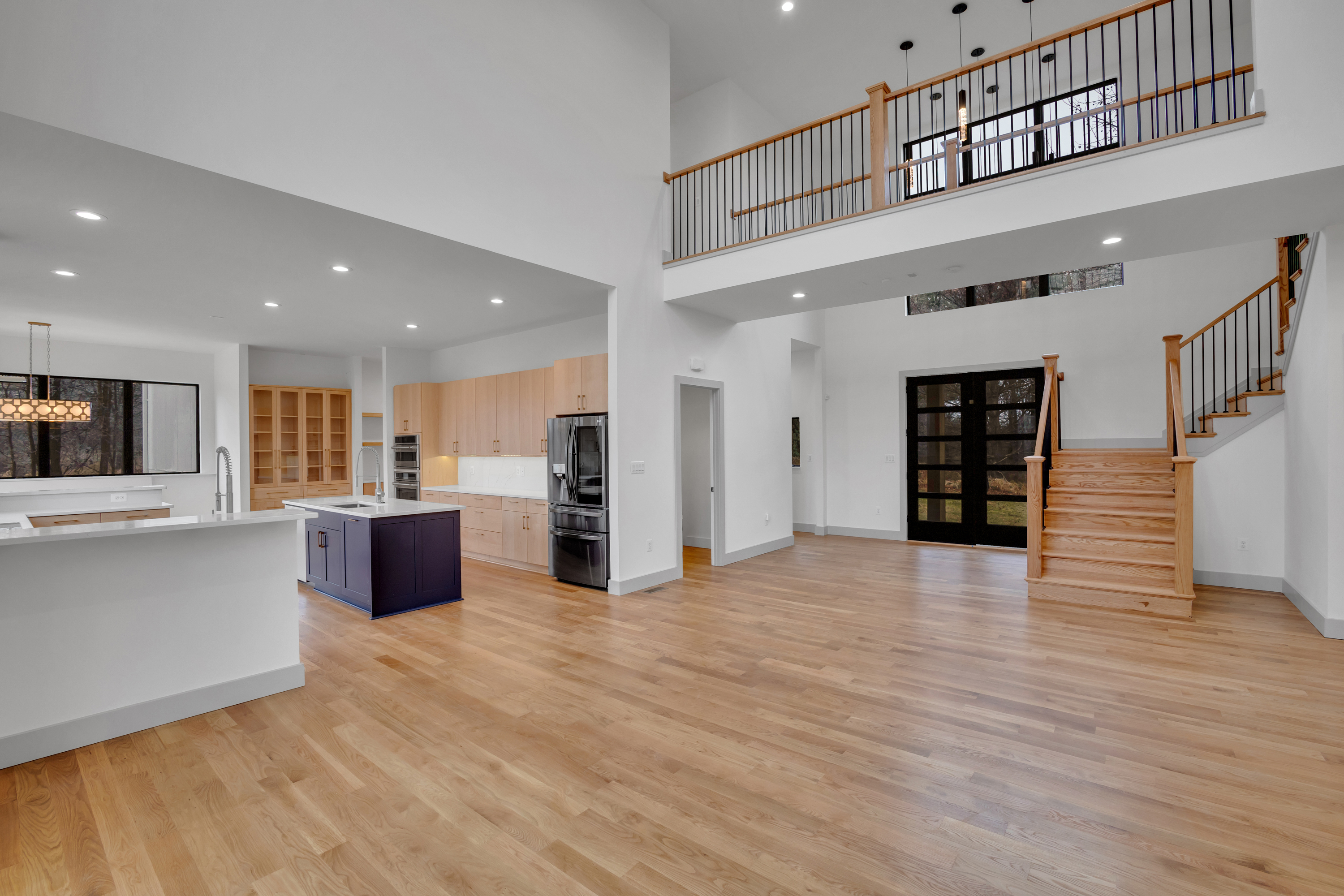
The home's lighting, window shades, climate control, smoke/carbon monoxide detectors, TVs, and a home security system can all be controlled through the homeowners' phones or voice-activated devices.
The house is net-zero certified and LEED Gold with a 15 kilowatt solar array on the roof—angled for optimum sunlight exposure—an EV charging station, and all-electric appliances/systems. Insulation goes way beyond building code requirements, and fresh-air exchange boosts indoor air quality, which Puri says is as important to the company as energy efficiency.
“For us, high performance means looking at the home holistically, meaning as an entire system ... not taking a piecemeal approach,” Puri explains. “When someone makes a car purchase, they base it on design and comfort, but also engine features and performance. But when people buy a house, they don’t pay attention to performance. And builders don’t usually pay attention either, unless there’s a code requirement.”
Designing for the Tech
Designing high-tech homes also involves low-tech considerations. And not every homeowner wants to go full throttle on the technology, which is why August Homes allows its clients to drive decisions on how much technology is ultimately incorporated. For example, these clients appreciated the aesthetic of solar panels and happily agreed to steep roof angels that show them off. But another recent August client wanted only as much solar as could be installed while also being concealed from view.
“If you do everything right on the high-performance side,” Puri says, “then all that’s left is to add solar and you get net zero or energy independence. And fortunately, high-tech products usually offer sleeker designs than their low-tech alternatives. Part of the appeal of smart home tech is the user interface designs are often better looking than what they replace.”
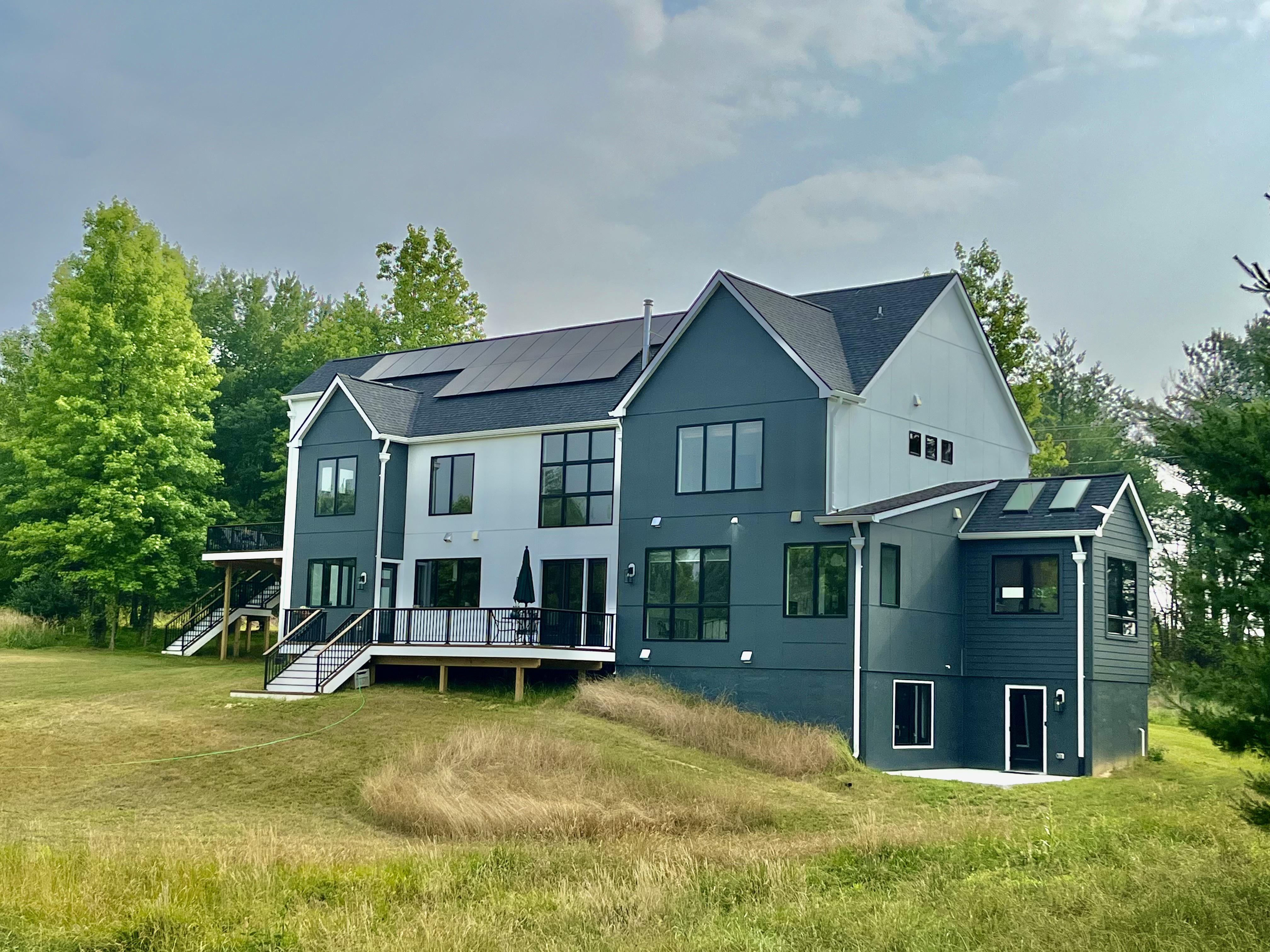
The Inflation Reduction Act extended the Residential Clean Energy Credit, which, according to the U.S. Department of Treasury, ensures that "households will be able to continue receiving a tax credit to cover up to 30% of the costs of installing rooftop solar and, starting next year, battery storage, though at least 2034."
Home offices require low-tech design features: What are the sound-proofing or privacy needs for someone doing telemedicine; how to best arrange lighting for low glare but high visibility on video calls for a CEO; where in the house is best to locate a home office—or two home offices if needed and how far apart do they need to be?
The Loundoun County clients only wanted one home office and it had to encapsulate the site’s verdant vistas. Design considerations included adjusting window height to fit a desk beneath while allowing for someone sitting at the desk to enjoy unobstructed sight lines.
“Designing for 21st-century families means thinking differently about design,” Puri says. “Most people need a second home office instead of a formal living or dining room, but how far apart do those two home offices need to be for noise considerations? And you need proper hardwiring for both offices to run high-speed cables because a cybersecurity client can’t work over a wireless connection or if the Wi-Fi goes down, you need the wired backup. And we have to future-proof homes by running blank conduits throughout for unanticipated wiring needs later.”
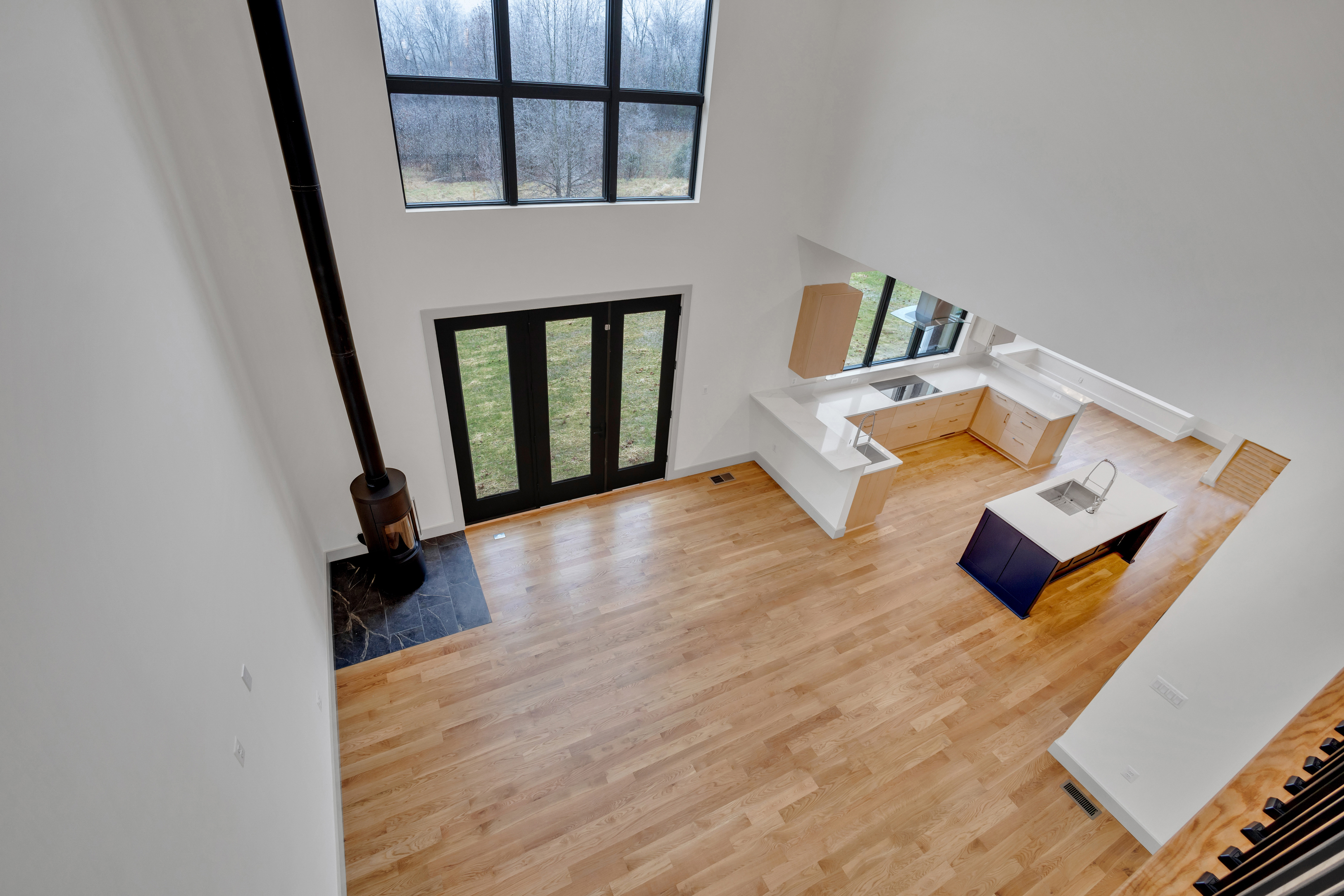
A wood-burning stove provides a low-tech solution for reducing power demand for heat in winter.
Just like our personal technology, smart home design is becoming more and more individualized because homeowner and family needs are more often unique. One recent August Homes client does teletherapy, so her home office needed a smart lock, separate wiring and internet from the rest of the house, and a camera inside to ensure the privacy of client records. Plus, the owner wanted natural light but needed to prevent anyone outside from looking in.
“Homes are no longer for eating and sleeping,” Puri says. “Your home should be a place of wellness. It also must be a place for working, gathering, play and hobby, restful sleep—which is different from sleep. Air quality, views, light, spatial arrangements, future-proofing—it all matters.”
Integrating All the Tech
Off-the-shelf home automation systems are becoming more integrated, so everything from thermostats to lighting to security systems come from the same company or are at least compatible. This gives homeowners one app on their phones to learn and use instead of many. Puri says consumers drove this change, which has come about over the past few years.
The team at August Homes lets clients lead the way on which brand to use as their base tech. They often have brand loyalty and will specify if they only want products compatible with Ring, Apple Home, or Nest. Puri benefits from this brand loyalty because it saves the builder time and money.
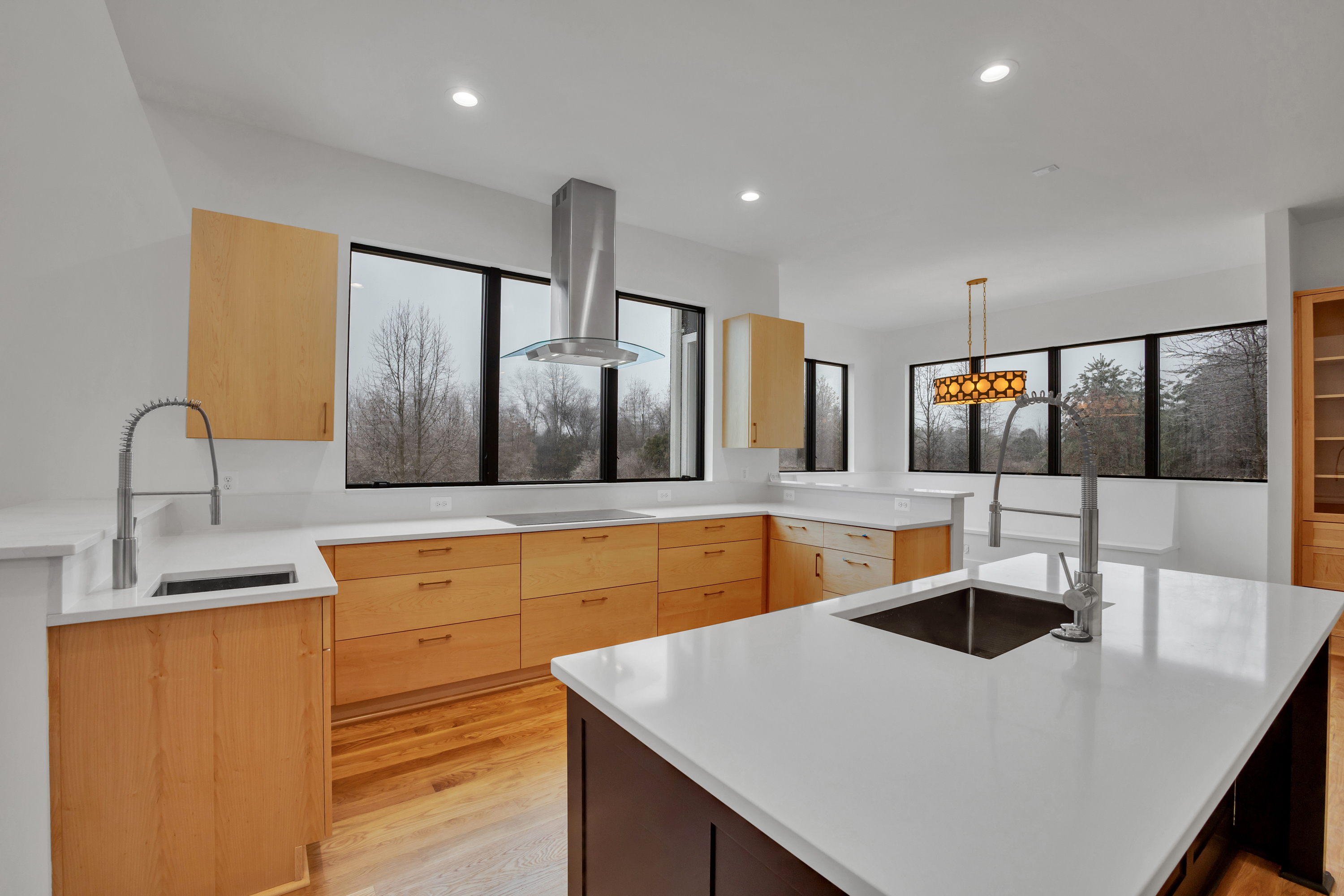
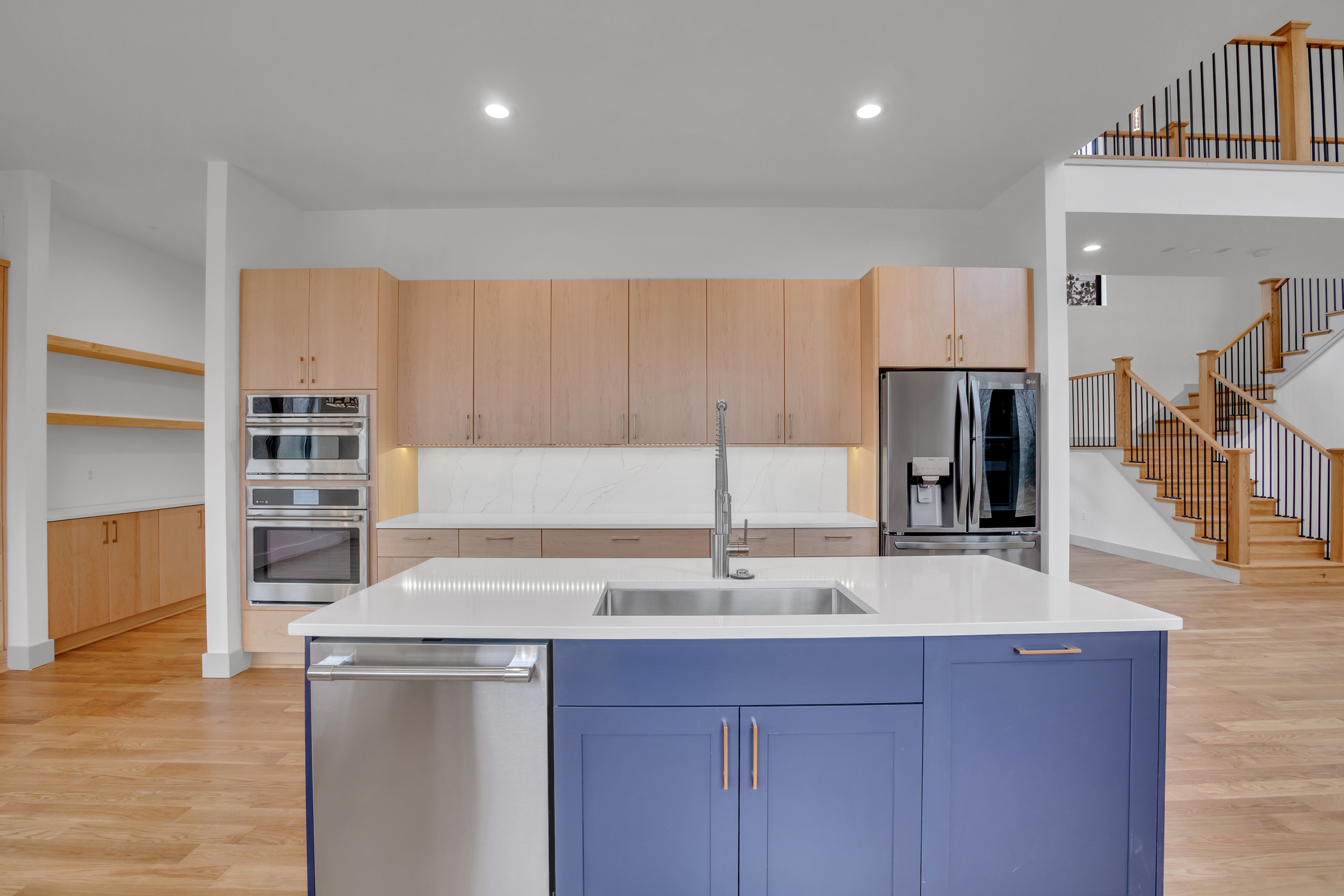
According to the Rocky Mountain Institute, "Electric appliances produce no direct combustion emissions, and result in substantial emission reductions even when upstream emissions from electricity generation are considered."
Puri adds that it’s a true mix of how much technology different clients want in their homes. Most want a medium level of high-tech features and home automation. Many clients come to them for their high-performance, energy-independent building philosophy.
Some clients prefer as little technology as possible due to concerns about data exposure and hacking. Fewer still want all the latest and most advanced technology toys available. Still, Puri admits that nearly every client will have added to or upgraded their tech within a few months of moving into their house.
Technology changes rapidly, so Puri and his team use a trusted group of trade partners and third-party ratings to keep them updated. For example, a Nest thermostat is no longer just turning your AC up or down, it and its accompanying smart phone app now also serve as an automation hub controlling lighting, security, hot water temperatures, smoke/carbon monoxide sensors, and flood detectors.
“What we can do in a home versus what clients want or are comfortable with is usually a wide gap,” Puri says. “Some of those choices are about cost—super high-tech systems are expensive—but many decisions also involve what actually benefits you, like I’d recommend flood sensors and high-tech CO2 detectors over a smart fridge any day.”
Project: Loudoun County Net Zero LEED Gold Home
Designer/Builder: August Homes, Tysons, Va.
Related Stories
Custom Builder
Start With the Why: Fundamentals of the Custom Builder Business
In our inaugural episode of Taking Care of Business, host and custom builder Duane Johns sits down with Scott Beebe, head coach and founder of My Business on Purpose, to talk vision, purpose, mission, values, and more
Business
Why AI Is Now Key to Our Trade Partner Strategy
Thompson Custom Homes Business Manager Erin Day explains how AI became a crucial part of building and maintaining successful trade partner relationships
Business
Choosing Humanism, History, and Beauty Over Modernism
Celebrated architect Laurence Booth, whose career spans half a century, shares insights on modernism's flaws, the characteristics of beauty, his design process, and more
Custom Builder
Understanding Your Biggest Competitor
You may not think of yourself as a tour guide, therapist, doctor, marriage counselor, or investment advisor. But those are the skills custom builders need in today's market
Custom Builder
The Power of Stories
At the 2023 Jeff Shore Sales and Marketing Summit, we sat down with author, speaker, trainer, and home building sales expert Ryan Taft to explore his thoughts on storytelling, including its role in successful sales and relationship building
Custom Builder
In Business: Modern Design, Compromise, and Money
Custom builder Zane Williams opens up about what it takes to maintain his architectural vision, from handling clients and staying true to his fluid style, to the importance of transparency and how a slush fund avoids awkward conversations mid-construction
Custom Builder
Five Key Spokes of the Business Bike Wheel
Much like a bike wheel depends on its spokes to work effectively, a business depends on its various departments to find success in the market.
Backstory
An Uncompromising Vision
How one Florida builder maintains a project’s vision and intent from design through construction
Business
Five Steps for a More Seamless Custom Build Process
There are several steps that builders should take when developing a custom home to achieve a more seamless process for customers
Business
Selections Strategy
Collaboration holds the key to a smoother selections process that satisfies both client and builder



